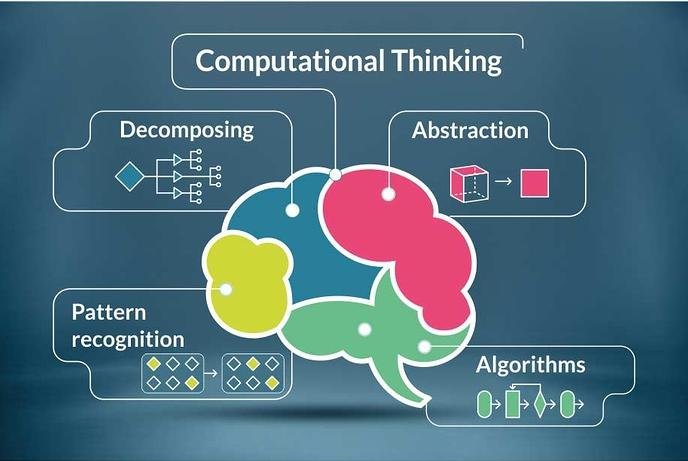The term “21st Century Skills” has been referenced frequently in education circles for over a decade. Though the educational philosophies and political/economic motivations undergirding these skills originated well before the dawn of the 21st century, the list that coalesced into the 21st Century Skills we recognize in American education today gained prominence with educational initiatives like the Partnership for 21st Century Skills (P21) Framework for education (2002) and the Common Core State Standards (2010). 21st Century Skills have been discussed ubiquitously over the years, but generally speaking, 21st Century Skills are “…the knowledge, life skills, career skills, habits, and traits that are critically important to student success in today’s world…” (Buckle, n.d.). The P21 Framework for 21st Century Learning categorizes 21st Century Skills this way:
- Learning Skills: Also known as the “Four Cs”–critical thinking, communication, collaboration, and creativity.
- Life Skills: Flexibility, initiative, social skills, productivity, leadership
- Literacy Skills: Information literacy, media literacy, technology literacy
(Buckle, n.d.)
Much effort has gone into applying these skills to K-12 education curriculum and standards. Indeed, the Common Core State Standards are excellent examples of just such an effort. Another set of standards, the International Society for Technology in Education (ISTE) Standards for students, educators, coaches, and educational leaders, are closely tied to the successful integration of 21st Century Skills in classrooms and teacher preparation programs, especially where the last bullet point listed above is concerned. According to the ISTE website, their standards for technology use and integration have been adopted in all 50 states and in a number of countries across the globe. They exist as valuable resources and guidance for educators trying to understand how to best integrate technology in their classroom, no matter the age or content.
A gap exists, however, between K-12 and higher education, such that the standardization of, well…. anything really…in postsecondary education becomes tricky. Higher education instructors aren’t required to go through any kind of teacher preparation program before they begin teaching, they merely need to be experts in their discipline, and perhaps productive researchers. Being a good teacher is often just a bonus in higher ed. Thus, credential requirements and State standards for educators don’t apply in higher ed the same way they would in K-12 education or in teacher prep programs. Neither are there any kind of central, cohesive, discipline-neutral, nationwide standards that define what it means to earn a degree in a particular field and possess the “21st Century Skills” necessary for future success, either at the undergraduate or graduate level. There may be accreditation guidelines, field-specific certifications, practicums, or comprehensive exams which help structure higher education curricula, but because of the vastly differing needs/demand of higher education disciplines, postsecondary instructors have a great deal of autonomy in their approach to teaching and learning, for better and for worse.
Technology integration in the higher ed classroom, then, is no exception. Returning to the concept of 21st Century Skills, high school graduates hardly arrive at higher education institutions in possession of all the 21st Century Skills they need to thrive in the workplace or in society. If they did, they might be advised to skip college and head straight into the work force. So what kind of 21st Century Skill development is expected of students in postsecondary education? Are these any different than those expected of students in K-12? And perhaps most importantly, where should higher education instructors and coaches look for guidance?
The 21st Century has brought with it a “new learning paradigm” (Kivunja, 2014). In order for higher education instructors to be effective within this new paradigm, they must first be willing to move away from a teacher-directed model wherein the main objective in a course is transferring content knowledge. Instead, the slow-moving machine that is higher education must prioritize student-centered learning that promotes an active exchange of ideas, the acquisition of new skills, and the application of those skills to solve problems in real-world situations (Kivunja, 2014). Roger Brooks of Connecticut College shared his own, similar ideas about 21st Century teaching/learning in higher education in his 2013 Tedx presentation:
But where to begin? If a higher education instructor or instructional coach/designer are on board with this paradigm, what are some practical suggestions for how to start transforming teaching/learning in the classroom now? Perhaps recognizing that there is a gap in resources specifically aimed at supporting instructor training and best practices for student-centered, 21st Century teaching/learning in higher ed, Germaine et al (2016) offer some practical suggestions for integrating the four C’s of 21st Century Learning Skills into postsecondary teaching/learning:
- Critical Thinking/Problem Solving:
- Allow student choice to determine areas of research
- Encourage students to closely examine values/ideas/concepts and weigh them against their own personal values/ideas/concepts
- Provide space for intellectual autonomy
- Communication:
- Assign group projects which require successful interpersonal communication to achieve a common goal
- Leverage technology to have students communicate ideas in nonverbal ways (graphics, visuals, multi-media)
- Create space to consider how communication strategies might differ in global contexts
- Review, evaluate, and critique communication efforts
- Collaboration:
- Utilize online professional learning communities in which students engage in group problem solving and feedback
- Consider how the use of social media, blogs, and discussion forums can be best used to promote student interaction
- Use assignments/projects which ask students to connect with those outside their peer group and even the institution
- Creativity/Innovation:
- Establish assignments or projects with a clear objective or end goal but with real freedom in deciding how that objective or end goal will be met.
- Use concept mapping to help students create unique representations of abstract concepts
- Have students “write their own exam” and have them reflect their understanding of a concept by creating their own assessment
This list of suggestions is hardly exhaustive, but it’s heartening to be reminded of the ways 21st Century Skills can be implemented with versatility and without feeling limited by the parameters of a specific discipline. It’s also proof that 21st Century Skills, no matter the lists, standards, or frameworks in which they appear (and there are many), are indeed essential to the postsecondary classroom and should not be relegated to the concerns of K-12 teachers and administrators. Whether higher education instructors need to be pointed to the ISTE standards, the P21 Framework, or some other list of 21st Century Skills, the skills themselves are relevant to learning and student success from preschool to graduate school. Perhaps what we need is more higher education instructors speaking out about successes in their classrooms and disciplines, inspiring others to think critically and creatively about how 21st Century teaching/learning could be brought to life in their own contexts.
References:
Brooks, R. (2013, May 26). Rethinking Higher Education for the 21st Century: Roger Brooks at TEDxConnecticutCollege. Youtube. https://www.youtube.com/watch?v=4avr9l6DTtM
Buckle, J. (n.d.). A comprehensive guide to 21st Century Skills. Panorama Education. https://www.panoramaed.com/blog/comprehensive-guide-21st-century-skills
Germaine, R., Richards, J., Koeller, M., Schubert-Irastorza, C. (2016). Purposeful use of 21st Century Skill sin higher education. Journal of Research in Innovative Teaching, 9(1), p.19-29. https://www.nu.edu/wp-content/uploads/2018/11/journal-of-research-in-innovative-teaching-volume-9.pdf#page=27
Kivunja, C. (2014). Innovative pedagogies in higher education to become effective teachers of 21st Century Skills: Unpacking the learning and innovations skills domain of the new learning paradigm. International Journal of Higher Education, 3(4) p37-48. https://eric.ed.gov/?id=EJ1067585
Shoology (2018, November 19). What are the ISTE Standards for Teachers and why are they relevant? Schoology Exchange. https://www.schoology.com/blog/understanding-iste-standards-teachers

